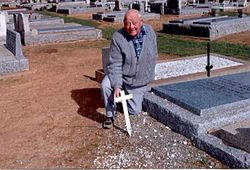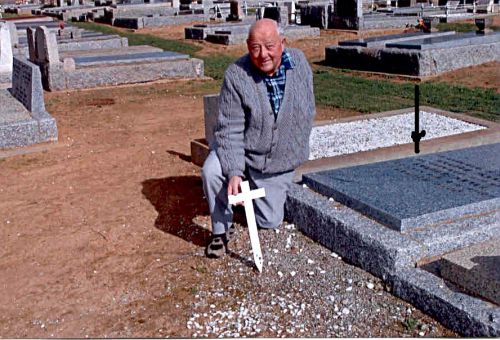The "Giraffe" was the central feature of a plan devised by Benjamin F. Ficklin, a Confederate Treasury Agent whose responsibility was acquiring and delivery of engraving supplies from England; who was sympathetic towards the south. Ficklin convinced the Confederate Secretary of Treasury, Memminger, to allow him to proceed to England with a Confederate Naval officer, purchase a steamer, load it with Treasury and War Department supplies and run the blockade back into the Confederate States. The vessel he had decided upon was the "Giraffe", a two year old vessel, 283 feet long, schooner-rigged, iron-hulled, oscillating-engine paddlewheel steamer with a 20 foot bean and a 10 foot draft with two stacks and capable of doing 13.5 knots; built on the Clyde during the autumn of 1862 as a fast Glasgow-Belfast, Scotland packet boat. Her owners had recently lost money and it had been placed up for sale.
Memminger approved his plan and in late summer 1862 Ficklin and Naval Lieutenant John Wilkinson arrived in London, England to negotiate the sale of the "Giraffe" from it owner, Alexander Collie. Collie, a British businessman, was already operating his own blockade running business and sold it to them for the sum of 32,000 pounds' with the provision the ship not be sold to private individuals. The "Giraffe" was converted from a luxury ferryboat to a blockade-runner and the plan was set into motion.
Aboard the "Giraffe" were munitions for the War Department, lithographic equipment and twenty-six lithographers hired by Ficklin under orders of the Treasury Department. Naval Lieutenant Wilkinson accompanied them as far as Nassau, in the Bahama Islands, where he took command of the vessel. Ficklion then retuned to the states aboard a passenger steamer, by way of New York City from where he planned on making his way south through Union lines to Richmond, Virginia.
The "Giraffe" left Nassau on December 27, 1862 bound for South Carolina, but due to foggy weather had to divert to Wilmington, North Carolina. Upon nearing Old Inlet a Union blockade ship was sighted patrolling the coast. Waiting until darkness fell, Wilkinson edged the "Giraffe" close to the shore, made his way past the Union ship and made for port at Old Inlet. The "Giraffe" ran at full speed without being seen but before reaching the safety of Old Inlet, ran into what was called "the Lump"; a sand knoll some two miles outside the protection of the bar. The collision knocked everyone down, but the vessel remained undamaged. The lithographers were sent ashore in a small boat while Wilkinson and the crew struggled to free the vessel from the sand bar. Eventually, they made good their escape and the "Giraffe" made a run into Cape Fear River, arriving off Smithville around midnight on December 29, 1862.
It then proceeded from there to Wilmington, North Carolina where it was quickly unloaded and Wilkinson awaited further orders. The War Department, refusing to give up their control of the "Giraffe" and it was given a Confederate registry and renamed the "Robert E. Lee"; with Lieutenant being retained as her Commander. In late January 1863, Commander Wilkinson took the "Robert E. Lee" out of Wilmington, completing the first of five successful round trips. She established a legendary reputation by outracing the blockader USS "Iroquois"
The lithographers were eventually taken prisoner by the Union, but were released shortly afterwards; their printing presses, equipment and an amount of already printed money were all destroyed or confiscated. John Boag was to be the last surviving member of the party of twenty-six that sailed from Scotland. At the conclusion of the Civil War, Boag entered the service of the U.S. Government as a bookbinder, but in a short amount of time was promoted to the U.S. Senate. Later he was transferred to the Railway Department a chief clerk and collector, but eventually returned to his original position which he held until he retired in 1909.
While still living in the U.S., John met Agnes Brag from South Carolina and after a courtship they were married. They were residing in New York when they had a son, whom they named John Orr Boag.
John Orr Boag was living on Francis Street in the Borough of Euchua, County of Rodney in Victoria, still working as a printer when he died at sixty-eight years of age on August 25, 1910 while visiting his sister, Mrs. Catherine Henderson of Echuca. He died of "Pernicious Aenemia" of which he had been suffering for some six weeks and was so diagnosed by Dr. Eakins. His funeral procession left the Echuca Railway Station on Saturday at 3:50 P.M. and proceeded to Rochester, where he was buried in the Rochester Cemetery on August 27, 1910, at Rochester, Victoria, Australia; next to his brother-in-law Robert Henderson. Funeral services were conducted by the Rev. Henry Carroll, a Presbyterian Minister and his undertaker was registered as Mr. A.B. Humphries. He had only lived in Victoria for one year. John's sister Catherine was later buried in Rochester alongside her husband and brother.
Even though John Orr Boag never served as a soldier of the Confederacy, being a member of the Confederate Treasury Department he was considered to be a full fledged citizen of the Confederate state of South Carolina and a cog in the Confederate Government. As such he has to be considered and accepted as a non-combatant member of the Confederacy with all it bestows.
John Orr Boag was a prominent member of the Masonic Order in America and in addition to his brother, James Orr Boag, who lived in South Carolina, he had two sisters who survived him; Mrs. A. McLennan and Miss Boag, both of Cohuna, Victoria.
The "Giraffe" was the central feature of a plan devised by Benjamin F. Ficklin, a Confederate Treasury Agent whose responsibility was acquiring and delivery of engraving supplies from England; who was sympathetic towards the south. Ficklin convinced the Confederate Secretary of Treasury, Memminger, to allow him to proceed to England with a Confederate Naval officer, purchase a steamer, load it with Treasury and War Department supplies and run the blockade back into the Confederate States. The vessel he had decided upon was the "Giraffe", a two year old vessel, 283 feet long, schooner-rigged, iron-hulled, oscillating-engine paddlewheel steamer with a 20 foot bean and a 10 foot draft with two stacks and capable of doing 13.5 knots; built on the Clyde during the autumn of 1862 as a fast Glasgow-Belfast, Scotland packet boat. Her owners had recently lost money and it had been placed up for sale.
Memminger approved his plan and in late summer 1862 Ficklin and Naval Lieutenant John Wilkinson arrived in London, England to negotiate the sale of the "Giraffe" from it owner, Alexander Collie. Collie, a British businessman, was already operating his own blockade running business and sold it to them for the sum of 32,000 pounds' with the provision the ship not be sold to private individuals. The "Giraffe" was converted from a luxury ferryboat to a blockade-runner and the plan was set into motion.
Aboard the "Giraffe" were munitions for the War Department, lithographic equipment and twenty-six lithographers hired by Ficklin under orders of the Treasury Department. Naval Lieutenant Wilkinson accompanied them as far as Nassau, in the Bahama Islands, where he took command of the vessel. Ficklion then retuned to the states aboard a passenger steamer, by way of New York City from where he planned on making his way south through Union lines to Richmond, Virginia.
The "Giraffe" left Nassau on December 27, 1862 bound for South Carolina, but due to foggy weather had to divert to Wilmington, North Carolina. Upon nearing Old Inlet a Union blockade ship was sighted patrolling the coast. Waiting until darkness fell, Wilkinson edged the "Giraffe" close to the shore, made his way past the Union ship and made for port at Old Inlet. The "Giraffe" ran at full speed without being seen but before reaching the safety of Old Inlet, ran into what was called "the Lump"; a sand knoll some two miles outside the protection of the bar. The collision knocked everyone down, but the vessel remained undamaged. The lithographers were sent ashore in a small boat while Wilkinson and the crew struggled to free the vessel from the sand bar. Eventually, they made good their escape and the "Giraffe" made a run into Cape Fear River, arriving off Smithville around midnight on December 29, 1862.
It then proceeded from there to Wilmington, North Carolina where it was quickly unloaded and Wilkinson awaited further orders. The War Department, refusing to give up their control of the "Giraffe" and it was given a Confederate registry and renamed the "Robert E. Lee"; with Lieutenant being retained as her Commander. In late January 1863, Commander Wilkinson took the "Robert E. Lee" out of Wilmington, completing the first of five successful round trips. She established a legendary reputation by outracing the blockader USS "Iroquois"
The lithographers were eventually taken prisoner by the Union, but were released shortly afterwards; their printing presses, equipment and an amount of already printed money were all destroyed or confiscated. John Boag was to be the last surviving member of the party of twenty-six that sailed from Scotland. At the conclusion of the Civil War, Boag entered the service of the U.S. Government as a bookbinder, but in a short amount of time was promoted to the U.S. Senate. Later he was transferred to the Railway Department a chief clerk and collector, but eventually returned to his original position which he held until he retired in 1909.
While still living in the U.S., John met Agnes Brag from South Carolina and after a courtship they were married. They were residing in New York when they had a son, whom they named John Orr Boag.
John Orr Boag was living on Francis Street in the Borough of Euchua, County of Rodney in Victoria, still working as a printer when he died at sixty-eight years of age on August 25, 1910 while visiting his sister, Mrs. Catherine Henderson of Echuca. He died of "Pernicious Aenemia" of which he had been suffering for some six weeks and was so diagnosed by Dr. Eakins. His funeral procession left the Echuca Railway Station on Saturday at 3:50 P.M. and proceeded to Rochester, where he was buried in the Rochester Cemetery on August 27, 1910, at Rochester, Victoria, Australia; next to his brother-in-law Robert Henderson. Funeral services were conducted by the Rev. Henry Carroll, a Presbyterian Minister and his undertaker was registered as Mr. A.B. Humphries. He had only lived in Victoria for one year. John's sister Catherine was later buried in Rochester alongside her husband and brother.
Even though John Orr Boag never served as a soldier of the Confederacy, being a member of the Confederate Treasury Department he was considered to be a full fledged citizen of the Confederate state of South Carolina and a cog in the Confederate Government. As such he has to be considered and accepted as a non-combatant member of the Confederacy with all it bestows.
John Orr Boag was a prominent member of the Masonic Order in America and in addition to his brother, James Orr Boag, who lived in South Carolina, he had two sisters who survived him; Mrs. A. McLennan and Miss Boag, both of Cohuna, Victoria.
Sponsored by Ancestry
Advertisement
Advertisement


